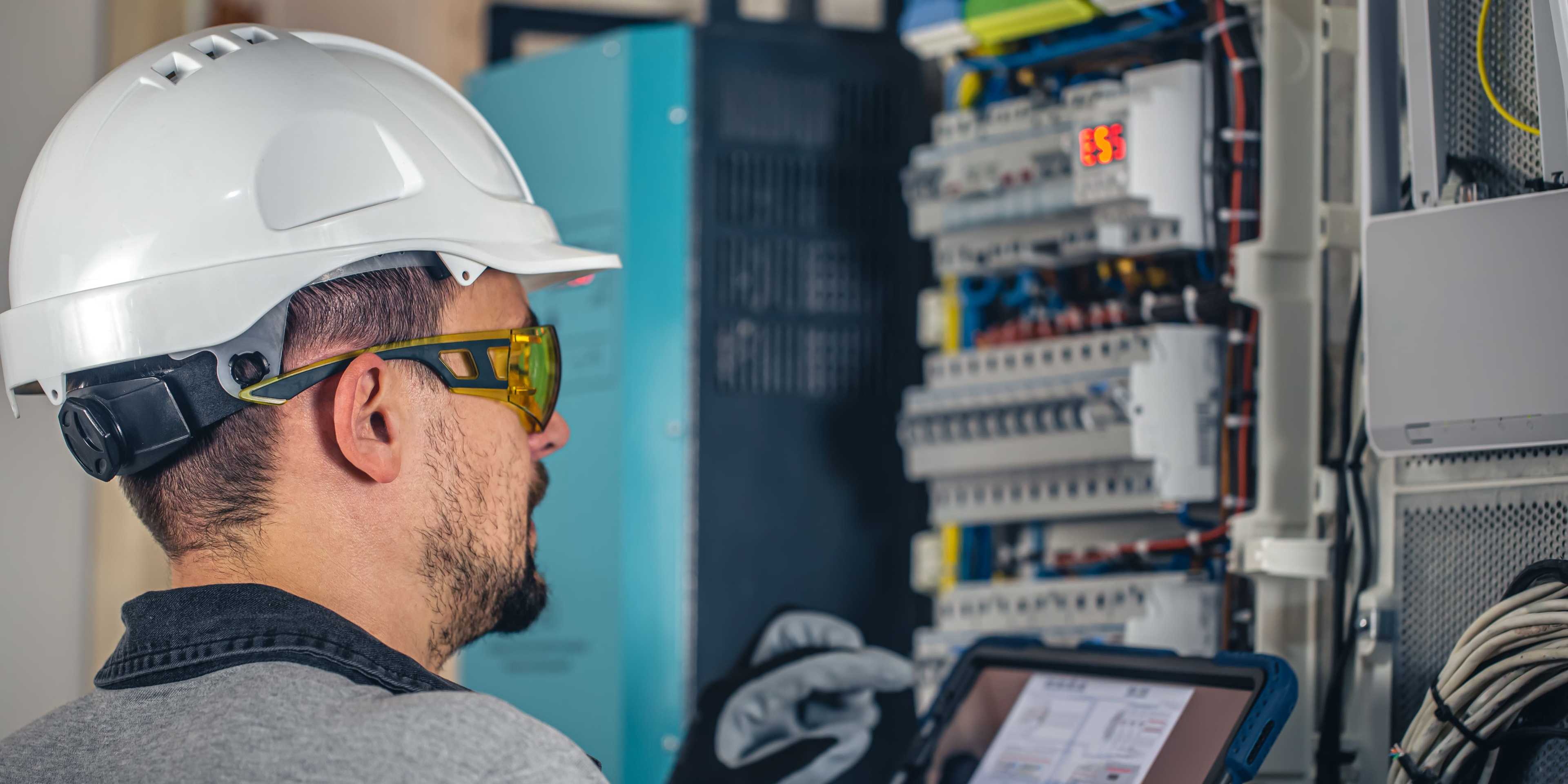The Electricity at Work Regulations 1989 highlights what can be done by duty holders to achieve electrical safety compliance with the duties imposed by the Regulations.
Introduction to Electrical Safety
Electrical risk is considered when there is a possibility of human body contact with an electrical current which can pose a danger to people's integrity.
Different types of electrical hazards vary according to the type of contact:
- Direct: occurs when the worker directly contacts live equipment or active parts of an installation.
- Indirect: occurs when the worker comes into contact with improperly insulated equipment and installations.
- Electric arc: a high-current continuous electrical discharge flowing through an air space between conductors.

What factors determine the severity of an electrical accident?
Several factors influence the severity of an electrical accident, which we can separate into technical factors and human factors:
Technical Factors:
- Intensity of the current passing through the human body.
- Path of the electric current through the human body.
- Time of exposure to the risk.
- Nature of the current (AC/DC current).
- Electrical resistance of the human body.
- Applied voltage.
Human Factors:
- The age of the victim.
- Emotional state.
- Diseases or possible pathologies.
- Experience with electrical work.
How many fatal accidents are caused by electricity every year?
Around 1,000 accidents involving electricity are reported to the HSE each year, with approximately 30 of these being fatal.

The main hazards associated with electrical work:
Electricity can be responsible for the loss of lives or damage to material goods. They can be classified into:
- Electrification and electrocution: The human body is composed of 70% water, making it a very good conductor of electricity. During the time electricity travels through the body, there can be injuries to the skin, blood vessels, nerves, etc.
- Faults that could cause fires.
- Fires and/or explosions: Electrical current can generate overloads in the installation, sparks, or short circuits. These can cause fires and even explosions.
The most common causes of accidents due to electrical work
- Old installations that need to be renewed due to lack of maintenance or damage.
- Lack of safety, maintenance, or renewal in the installations. Lack of safety, signage, or determination of workplaces.
- Negligence. Overconfidence, improper use of protective equipment or lack of analysis and planning prior to the start of work means that all the measures taken beforehand are of no use.
- Absence of risk analysis and strategic planning.
- Improper use of protective elements.
- Lack of action protocols, protective tools, or correct signage.

Responding to Electrical Emergencies
Training in Basic First Aid: Educating staff in fundamental first aid methods prepares them to manage electrical injuries until medical experts arrive.
Emergency Team: Establishing a team specifically trained in electrical safety measures can proficiently deal with urgent situations.
Evacuation Plan: Implementing well-defined evacuation routes guarantees that employees can promptly leave the building in urgent scenarios.
Find more information about emergency plans and creating a safer working environment.
Preventive measures against electrical work
- Follow current regulations and the company's internal policy. Companies should keep their action and prevention protocols against electrical accidents up to date.
- Do not handle wet electrical installations or equipment.
- Do not overload electrical installations
- Choose the appropriate PPE for each job, for example:
o Dielectric gloves.
o Dielectric boots.

The 5 Golden Rules
The 5 Golden Rules are a procedure for performing electrical work without tension. It is a highly recognized protocol that can help minimize electrical risk and prevent accidents. They are:
1. Disconnection of power sources. Effective cutting.
2. Lockout and signage to prevent reconnections.
3. Verify the absence of voltage.
4. Grounding and short-circuiting.
5. Protection and signage of the work area.
For more information on the prevention of electrical risk, you can also consult the Electrical Safety Guidance from the Health and Safety Executive.
Safeguru | Delivering a Safer Future
